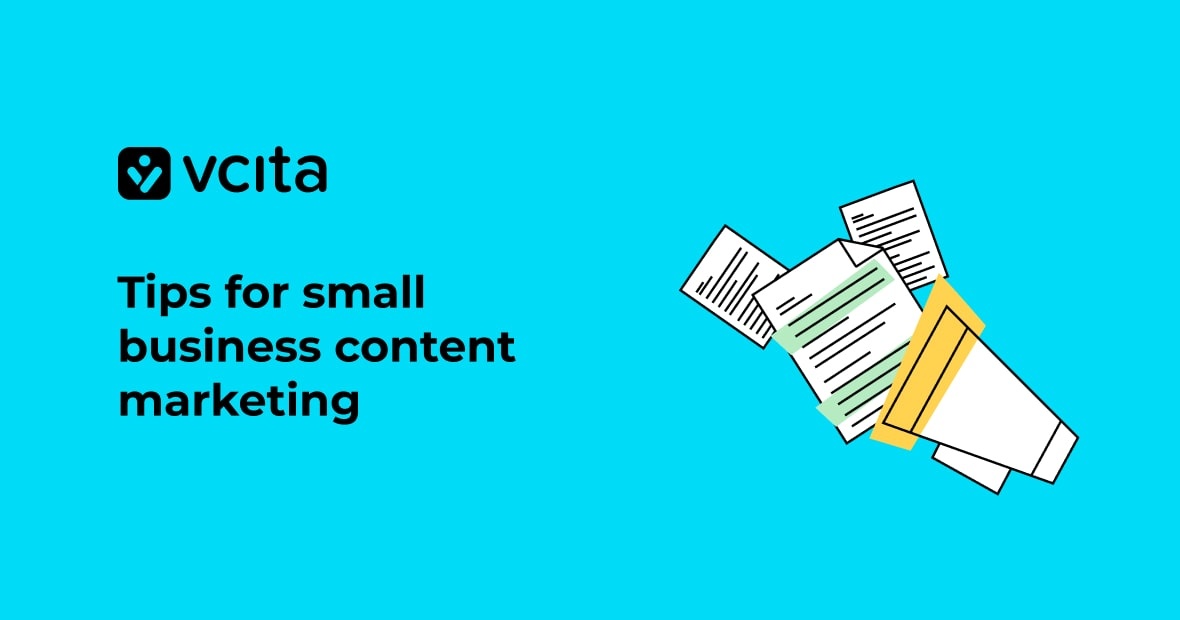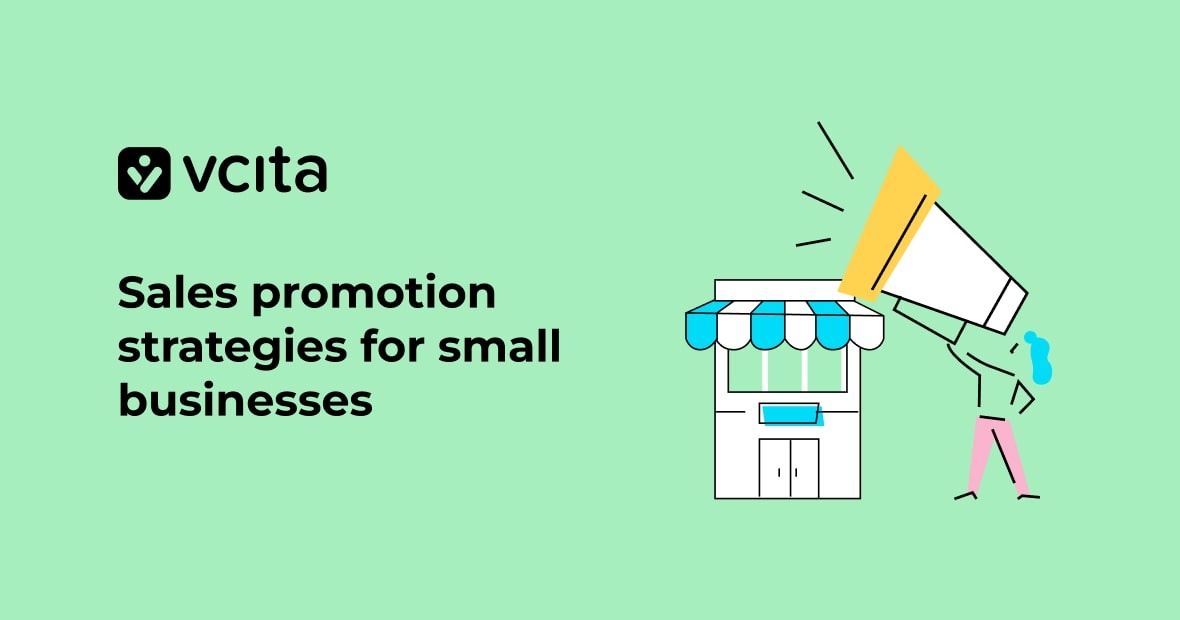Attracting your ideal customers is key to growing your small business, and content marketing is an excellent way to achieve that. With a solid business content marketing strategy, you can establish yourself as a thought leader, save time with your content creation, and generate more leads.
The secret lies in understanding your target audience, creating content that speaks directly to their needs, and distributing that content across channels like blog posts, social media postings, and email newsletters. Read on to learn the secrets of successful content marketing for small businesses.
Why content marketing is essential for small businesses
As a small business owner, content marketing should be an essential part of your small business content marketing strategy. Creating useful and relevant content for your target audience is key to establishing your business as a thought leader in your industry and generating more leads. Here are some of the ways that content marketing can help your business grow.
Build authority and trust
Publishing useful content on your blog, social media, and email newsletter establishes your business as a trusted resource in your industry. As you create content that provides real value to your readers, you build authority and position yourself as an expert. This makes you the go-to source for advice and products or services in your field.
Reach new potential customers
Distributing content on platforms like social media, your email list, and search engines exposes your business to new potential customers. Well-optimized, high-quality content also ranks higher in search results, so people searching for solutions you provide will find your content. When they see the value in what you offer, they’ll likely turn into new leads and customers.
Nurture customer relationships
A steady stream of helpful content keeps your business at the front of customers’ minds. Existing customers appreciate the value and are more likely to stay loyal to your brand. Content that addresses their needs and interests strengthens your connection to them.
Save time and money
Content that resonates with your target audience generates organic traffic, leads, and sales, which means you can save money on paid advertising and sales outreach. You’ll also save time on cold calls and qualifying leads, since your content has already educated people about your products or services.
Know your audience and create relevant content
To attract your ideal customers, you need to know who they are and what content they want. The best way to do this is by analyzing your customer base. Define your target audience based on factors like location, age, gender, interests, and income, then create a content calendar with topics and mediums that will resonate most with them.
In general, people are interested in hearing your expertise, so discuss industry trends and tips for success. Establish yourself as a thought leader by contributing guest posts to industry publications, and repurpose and share that high-value piece of content across channels like your website, email newsletter, and social media.
Pay attention to which topics and mediums your audience engages with most. Check your Google Analytics to see how people found your site and what they viewed. Then produce more of the type of content that resonates. You’ll build loyalty by consistently providing information your customers want.
A successful business content marketing strategy for your small business depends on truly understanding your customers and their needs. Create a feedback loop to learn what they find helpful and adjust your strategy accordingly. Stay on the cutting edge of marketing for small businesses, and keep your content fresh and relevant.
Types of content that work for small business marketing
The types of content you create can make or break your business content marketing strategy. Focusing on the right kinds of content will help establish you as a thought leader, save you time, generate leads, and grow your customer base.
Here are the top content types for small business content marketing. Ideally, you’ll publish a combination of different types of content on a regular basis.
Blog posts
Blog posts are a versatile type of content that resonate with search engines and your target audience. Aim for posts that are 500 to 1,000 words, focused on topics that would interest your ideal customers. Promote your blog posts on social media and in your email newsletter, and track traffic and leads with Google Analytics to see which posts get the most clicks and reads.
Videos
Videos are the most popular type of content today, so it’s an excellent way to reach new potential customers and engage your current audience. Short explainer or how-to videos are a great option for small businesses. Promote your videos on YouTube, Facebook, Instagram, and LinkedIn to increase views and shares.
Social media
An active social media presence, with a consistent posting schedule, is key for small business marketing. Share updates about your business, curate industry news, post behind-the-scenes photos, run contests, highlight your products or services, and engage with your followers. Pay attention to which posts get the most likes, comments, and shares to optimize your future content creation.
Email newsletters
Email newsletters are a direct line of communication to your customers and help build brand loyalty. Aim for a newsletter every week or every other week, with content like blog post summaries, special offers, recent video links, and company updates. Track open and click-through rates to see how your audience is engaging with each newsletter.
Developing the right content mix based on your target audience’s needs and interests will strengthen your business content marketing strategy and help you achieve your goals.
Developing a content strategy and content calendar
A content strategy ensures your content marketing efforts are focused and effective. As a small business owner, a documented content strategy can help guide your content creation and save time. Here are some important steps to developing an effective content strategy.
- Determine your goals
What do you want to achieve with your content? For example, do you want to generate leads, increase traffic, or build authority? Defining clear goals will shape the types of content you create. If lead generation is a goal, focus on content like ebooks, whitepapers, and webinars; to build authority, write guest blog posts in industry publications; for more traffic, build your social media following.
- Know your audience
Understanding your target audience is key. Analyze your customer base and see what types of content they engage with, and check Google Analytics to see which posts on your site get the most visitors. Then, create more of that content. You can also survey your email newsletter subscribers, or run social media polls to learn what topics interest them.
- Choose your top content types
It’s best to have a mix of content types to keep your audience engaged, but you’ll prioritize some content types over others. Your options include blog posts, videos, podcasts, case studies, infographics, social media posts, and ebooks. A good rule of thumb is to publish at least one piece of content per week. Mix up content types and formats to match how your audience likes to consume information.
- Develop an editorial calendar
An editorial calendar helps you plan and organize your content creation in advance. Map out topics, content types, and publishing dates for the next 3-6 months. That way you avoid scrambling to create content each week and can draft posts in advance during less busy times. You’ll feel like more of a thought leader with a steady stream of valuable content for your audience.
- Promote your content
Don’t let your content go to waste. Promote each new piece of content on social media, in your email newsletter, and by optimizing it for search engines. Choose a mix of free and paid promotion options to expand your reach.
Promoting your content on search engines, social media, and email
Once you’ve created useful content for your target audience, you want to promote it to make sure that it reaches as many people as possible. Here are some useful tips for increasing the reach of your content.
Leverage Search Engine Optimization (SEO)
Optimizing your content for search engines like Google is one of the best ways to increase traffic to your site. Google looks for keywords that match what your target audience is searching for, so use free tools like Google Keyword Planner to find keywords with high search volume and low competition in your industry, then use them in your page titles, meta descriptions, headings, and content.
Build a network of backlinks
Having other authoritative sites link to your content increases your position in search engine rankings and serves as another way for potential customers to discover your business. Reach out to industry influencers and ask them to link to and share your content. You can also leave valuable comments on other blogs in your niche, with a link back to your site.
Curate an email newsletter
Email newsletters have high open and click-through rates, so this is an easy way to drive traffic. Embed a lead magnet on your website to encourage visitors to sign up to your email list, with valuable content or promotions as an incentive for subscribers to click through. Share your new content with your subscribers, as well as special offers and discounts.
Make the most of social media
Promote your content on platforms where your target audience spends time, like Facebook, LinkedIn, and Twitter. Share updates, images, snippets, and links to drive readers back to your site, and engage with followers by liking and commenting on their posts as well, this way, you’ll build a loyal following that amplifies your content by sharing it with their network.
Measuring content marketing success with analytics
To determine if your content marketing strategy is working for your small business, you need to analyze the metrics. The two most important tools to use are Google Analytics, and your email newsletter platform.
Track traffic sources in Google Analytics
Connect your website and blog to Google Analytics. This free tool will show you how people are finding your content. Check your traffic sources report to see how many visits are coming from search engines, social media, and email, and monitor which search terms and social posts are driving the most traffic.
Monitor email newsletter engagement
Your email newsletter is a key part of your content marketing strategy, so watch your email metrics to see your open and click-through rates. Find out which types of content your subscribers prefer by seeing what gets the most opens and clicks. You may need to adjust the frequency and types of content in your newsletter based on the results.
Analyze individual content performance
Dive into the metrics for each piece of content you publish. See how many visits, social shares, and links each blog post, social media posting, and content asset receives. Look for your top performing content and use that as a model for future content creation. You may also find underperforming content that you need to refresh or replace.
Track conversions and leads
The ultimate goal of content marketing for small businesses is to generate leads and conversions. Install lead conversion tracking on your site to see how many visitors turn into leads or customers after reading or downloading your content. Look for opportunities to improve content and calls-to-action, to increase your conversion rates over time.
Make changes and improve your content strategy
Analytics provide insights to improve your business content marketing strategy and better attract your target audience, so study your content marketing analytics regularly and don’t be scared to make changes based on the data. You may need to refine your content calendar, optimize underperforming content, or create more of the content that’s working well.
Continuous optimization will help you generate more leads and build your customer base through content creation. While it does take time, analytics will ultimately help you save time by showing you what’s working and what’s not.
Save time by outsourcing content creation
As a small business owner, your time is precious. Creating content for your marketing strategy can take a lot of time that you don’t have. Outsourcing some or all of your content creation is a great way to overcome this challenge and save time. Here are some practical ways to streamline and save time on your content creation.
- Hire freelance writers
Freelance writers are affordable and can create blog posts, email newsletters, social media posts, and more. Look for writers with experience in your industry and target audience. Provide details on your content marketing strategy, audience, and key messages, then, give the writer creative freedom to do their job. Review and approve the content before publishing to ensure it aligns with your goals.
- Use content creation tools
Tools like Buzzsumo, Ahrefs, and SEMrush can provide content ideas and help you keep tabs on what’s trending in your industry. They suggest topics, questions, keywords, and more to spur new content. Some tools also have content generation features to auto-create social media posts, blog titles, and more. Then, you just fill in the details. These tools do some of the heavy lifting to make content creation quicker and easier.
- Repurpose and recycle existing content
One of the most effective ways to save time with content creation is to repurpose what you already have. Reusing and repackaging existing content in new formats takes less time than creating something from scratch. Take a popular blog post and turn it into an infographic, record a video summarizing a lengthy article, or turn Q&A’s from your site into a podcast. Keep your content fresh by giving it a new angle or updating statistics and examples. Consider repurposing content with AI so it’s easier, faster and involves less effort.
- Consider an editorial calendar
An editorial calendar helps you plan, organize, and keep track of your content. Map out topics, content types, and publishing schedules in advance, and identify any gaps to keep your content strategy well-rounded. With your calendar in place, content creation becomes more efficient since you already have direction for what to write and when. You’ll waste less time trying to figure out what to focus on next.
Outsourcing and streamlining parts of your content creation through these tips allow you to be a thought leader, build your customer base, and generate more leads.
Content marketing mistakes that small businesses should avoid
With so much to do each day, it can be easy to make mistakes that reduce the effectiveness of your content marketing strategy. According to recent surveys, these are the top content marketing mistakes made by small businesses, so you can take note and make sure to avoid them.
Not having a content calendar
Creating content on the fly leads to missed opportunities and wasted time. A content calendar will make your business content marketing strategy far more effective, and help you become a thought leader.
Not optimizing for search engines
If people can’t find your content, your time creating it is wasted. Using keywords related to your industry and location in your page titles, URLs, headlines, and content helps search engines like Google determine what your content is about so they can rank it higher in results..
Only posting on social media
While social media is important for promoting your content, a multi-channel approach helps you reach more of your target audience. Share your blog posts and other resources to your email newsletter subscribers, and add content to your website.
Not tracking your results
How do you know if your content marketing strategy for your small business is working if you’re not analyzing the results? Tools like Google Analytics show much traffic your content is generating and which pieces are the most popular.
Creating content just for the sake of it
Creating content that doesn’t help your customers or promote your products and services is a waste of time. Map out a thoughtful content marketing strategy focused on educating and engaging your target audience so you can save you time, generate more leads, and grow your customer base.
The right approach to content marketing can grow your business
Having a thoughtful business content marketing strategy is the key to success for your small business. Becoming a thought leader in your industry by creating helpful content and optimizing how you promote it will help you build your customer base and boost your search rankings over time. With a smart strategy focused on your niche and goals, small business content marketing can help you build authority, generate leads, and grow your business.




























